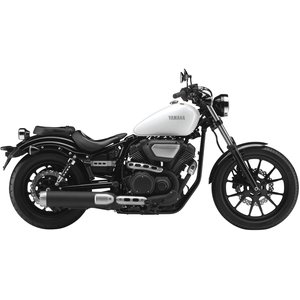Yamaha XV 950 Bolt R-Spec (2014-2020): The Urban Performance Bobber That Redefines Simplicity
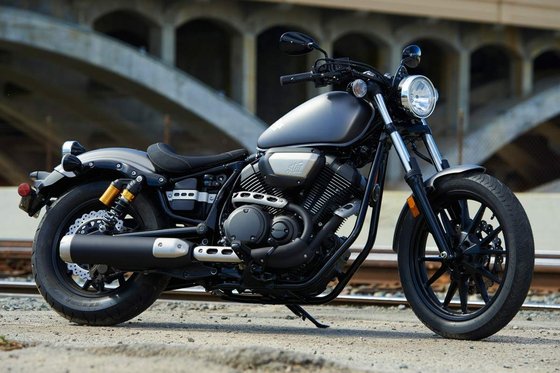
Introduction
When Yamaha introduced the Bolt R-Spec in 2014, it wasn’t just launching another cruiser—it was making a statement. In an era where motorcycles often prioritize tech overload or retro nostalgia, the Bolt R-Spec carved its niche as a minimalist "urban performance bobber." For riders seeking a no-nonsense machine that blends raw mechanical charm with modern reliability, this 942cc V-twin became an instant icon. Having spent time with this machine, it’s clear why it remains a favorite among riders who value customization, agility, and that unmistakable V-twin pulse. Let’s dissect what makes this generation of the Bolt R-Spec a standout in the cruiser world.
Design & Aesthetics: Stripped-Down Brutality Meets Craftsmanship
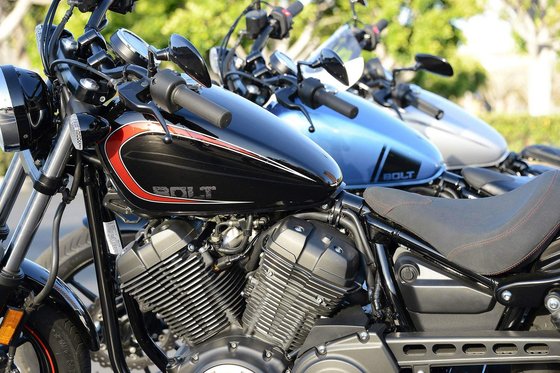
The Bolt R-Spec’s design philosophy screams “less is more.” From its unapologetically industrial engine finish to the absence of chrome, this bike embraces a "raw metal" ethos. The teardrop fuel tank (12-13L capacity, depending on the year) sits low and narrow, flanked by a solo suede-textured seat that’s only 690mm (27.2") off the ground—a godsend for shorter riders. Steel fenders, blacked-out mirrors, and a LED taillight with a vintage twist complete the bobber aesthetic.
Color options evolved yearly, ranging from Matte Gray and Camo Green in earlier models to Impact Blue and Tech Graphite in later years. The R-Spec’s defining touches include remote reservoir shocks and a stitched seat, giving it a premium edge over the base Bolt. Every line feels intentional, like Yamaha’s designers dared riders to modify it—and the aftermarket community obliged enthusiastically.
Engine & Performance: Torque Is the Name of the Game
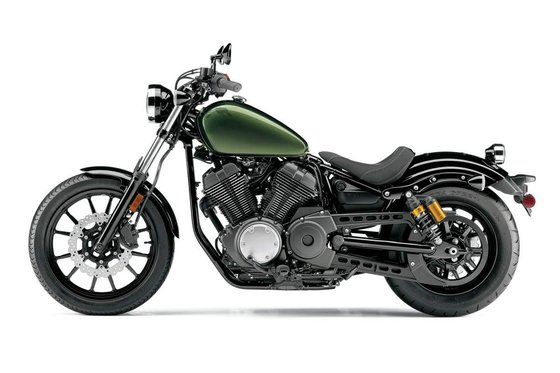
At the heart of the Bolt R-Spec lies its 942cc air-cooled V-twin, a 60° SOHC engine with 4 valves per cylinder. Don’t let the modest 51-53 HP (38-39.5 kW) fool you—this mill delivers 79.5-80.4 Nm (58.6-59.3 lb-ft) of torque peaking at just 3,000 RPM. Throttle response is immediate, with a linear powerband that’s forgiving in traffic yet eager on open roads. The Twin-Bore fuel injection system ensures crisp throttle transitions, and the 2-into-1 exhaust barks with a subdued growl that’s polite enough for city commuting but throaty under acceleration.
Key Engine Highlights:
- Ceramic-composite cylinder walls for heat dissipation and reduced friction.
- Roller rocker arms with needle bearings to minimize top-end noise.
- 5-speed transmission paired with a carbon-fiber-reinforced belt drive—smooth, quiet, and virtually maintenance-free.
Fuel efficiency hovers around 4.6-5.0 L/100km (47-51 MPG), making it frugal for weekend rides or daily commutes. The air-cooled design keeps things simple, though it’s worth noting that prolonged traffic jams on hot days will have you feeling the heat radiating off those cylinders.
Ride & Handling: Agile Enough for City, Stable Enough for Highways
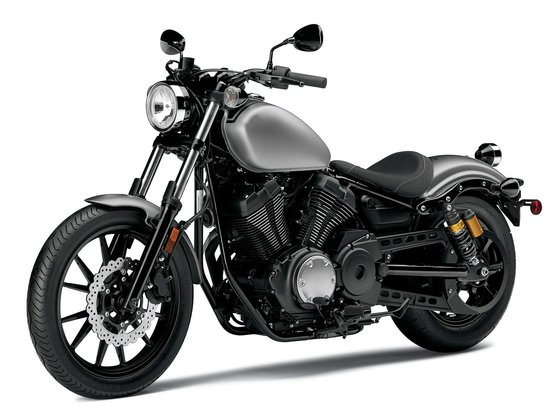
Yamaha nailed the geometry here. The 1570mm (61.8") wheelbase and 247kg (545 lbs) wet weight make the Bolt R-Spec shockingly nimble. Flicking through traffic feels intuitive, thanks to the 29° rake and 130mm (5.1") trail—numbers closer to a standard bike than a traditional cruiser. The 41mm telescopic fork offers 120mm (4.7") of travel, while the R-Spec’s piggyback shocks (adjustable for preload) handle bumps with more composure than the base model’s units.
Braking is handled by single 298mm wave rotors front and rear. While a second front disc would’ve been welcome for aggressive riding, the Nissin calipers provide adequate stopping power, especially with the ABS added in later models. The 100/90-19 front and 150/80-16 rear Bridgestone tires strike a balance between grip and that classic bobber stance.
The upright riding position—690mm (27.2") seat height, mid-mounted pegs, and a low-rise handlebar—is ergonomically neutral. You’ll feel connected to the road without sacrificing comfort on hour-long rides.
Competition: How the Bolt R-Spec Stacks Up
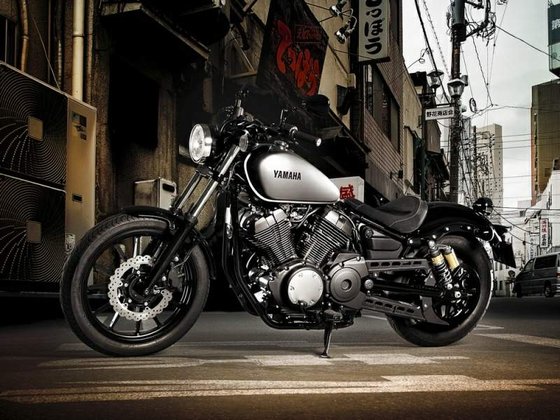
In the mid-displacement cruiser segment, the Bolt R-Spec faces stiff rivals. Here’s how it compares:
-
Harley-Davidson Iron 883
The Iron 883 leans harder into heritage, with a 883cc Evolution engine delivering 70 Nm (51.5 lb-ft) of torque. However, it’s 25kg (55 lbs) heavier and less flickable in tight spaces. The Bolt counters with better fuel efficiency and a lower seat height, making it more accessible for newer riders. -
Honda Shadow Phantom
Honda’s 745cc V-twin is smoother and quieter, but its 40 HP and 60 Nm (44 lb-ft) feel anemic next to the Bolt. The Shadow’s suspension is plusher, but the Bolt’s modern fuel injection and belt drive give it a maintenance edge. -
Kawasaki Vulcan S
The Vulcan S’s 649cc parallel-twin is a torque monster (63 Nm/46.5 lb-ft) with adjustable ergonomics. It’s more versatile for touring but lacks the Bolt’s minimalist character and V-twin soul.
Verdict: The Bolt R-Spec wins riders who prioritize lightweight handling, customization potential, and that air-cooled V-twin charm. It’s a blank canvas for personalization without the premium price tag of its American rivals.
Maintenance: Keeping Your Bolt R-Spec in Prime Shape
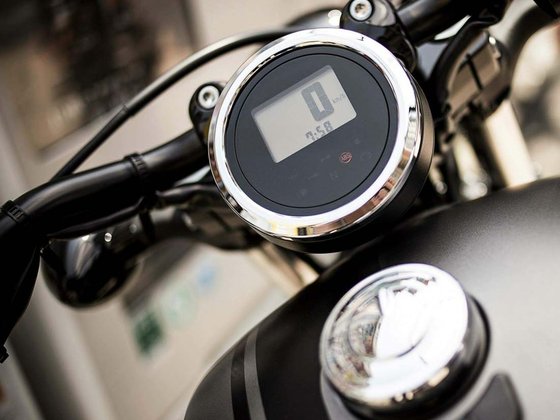
Ownership is refreshingly straightforward, but here’s what to prioritize:
-
Belt Drive Care
Inspect the belt every 8,000 km (5,000 miles) for cracks or debris. Replacement intervals stretch to 40,000 km (25,000 miles)—far less hassle than a chain. -
Oil Changes
Yamaha recommends SAE 10W-40 oil every 6,000 km (3,700 miles). The spin-on filter and accessible drain plug make DIY changes a breeze. -
Valve Adjustments
Check valve clearances every 25,000 km (15,500 miles). Intake valves: 0.08-0.12mm, exhaust: 0.22-0.26mm. Use a feeler gauge and patience. -
Suspension Tuning
The R-Spec’s piggyback shocks have 5-position preload adjustment. Dial it in based on load—stiffer for two-up riding, softer for solo comfort. -
Brake Fluid & Pads
Replace fluid every 2 years (DOT 4) and monitor pad wear. Wave rotors dissipate heat well, but aggressive riders might upgrade to sintered pads.
Pro Tip: Upgrade the air filter (MOTOPARTS.store offers high-flow options) and consider a slip-on exhaust to unlock a richer exhaust note without voiding reliability.
Conclusion: The Bobber That Bridges Generations
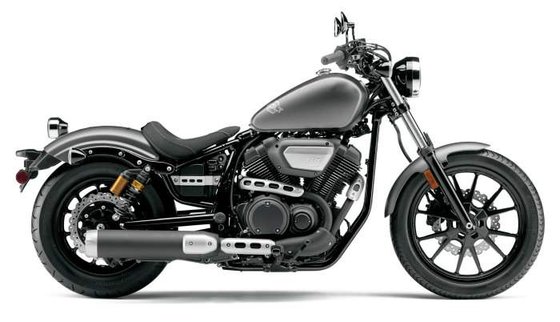
The Yamaha Bolt R-Spec isn’t just a motorcycle—it’s a lifestyle choice. It appeals to riders who crave the simplicity of a bygone era but refuse to compromise on modern engineering. Whether you’re threading through urban grids or carving backroads, this bike delivers a visceral, connected experience that’s rare in today’s market.
And here’s the kicker: it’s a platform begging for customization. From aftermarket exhausts to suspension upgrades, MOTOPARTS.store has everything to transform your Bolt into a one-of-a-kind masterpiece. So, if you’re hunting for a cruiser that’s equal parts attitude and agility, the Bolt R-Spec deserves your attention. It’s proof that sometimes, less really is more.
Specifications sheet
| Engine | |
|---|---|
| Stroke: | Four-stroke |
| Max power: | 40 kW | 54.0 hp |
| Max torque: | 80 Nm |
| Fuel system: | Twin-Bore electronic fuel injection with throttle position sensor |
| Max power @: | 5500 rpm |
| Displacement: | 942 ccm |
| Max torque @: | 3000 rpm |
| Bore x stroke: | 85.0 x 83.0 mm (3.3 x 3.3 in) |
| Configuration: | V |
| Cooling system: | Air |
| Compression ratio: | 9.0:1 |
| Number of cylinders: | 2 |
| Valves per cylinder: | 4 |
| Dimensions | |
|---|---|
| Wheelbase: | 1570 mm (61.8 in) |
| Wet weight: | 247 |
| Seat height: | 690 mm (27.2 in) |
| Overall width: | 830 mm (32.7 in) |
| Overall height: | 1120 mm (44.1 in) |
| Overall length: | 2290 mm (90.2 in) |
| Ground clearance: | 130 mm (5.1 in) |
| Fuel tank capacity: | 12 L (3.17 US gal) |
| Drivetrain | |
|---|---|
| Final drive: | belt |
| Transmission: | 5-speed, multiplate wet clutch |
| Maintenance | |
|---|---|
| Rear tire: | 150/80-16 |
| Engine oil: | 10W40 |
| Front tire: | 100/90-19 |
| Brake fluid: | DOT 4 |
| Spark plugs: | NGK CPR7EA-9 |
| Spark plug gap: | 0.9 |
| Forks oil capacity: | 1.1 |
| Engine oil capacity: | 4.0 |
| Engine oil change interval: | Every 5000 km or annually |
| Valve clearance (intake, cold): | 0.08–0.12 mm |
| Valve clearance check interval: | 24,000 km / 15,000 mi |
| Valve clearance (exhaust, cold): | 0.22–0.26 mm |
| Recommended tire pressure (rear): | 2.5 bar (36 psi) solo, 2.8 bar (41 psi) with passenger |
| Recommended tire pressure (front): | 2.25 bar (33 psi) |
| Additional Features | |
|---|---|
| Wheels: | 12-spoke cast aluminum |
| Lighting: | LED tail light, halogen headlight |
| Exhaust system: | 2-into-1 with catalyzer |
| ABS availability: | Available on 2020 models |
| Chassis and Suspension | |
|---|---|
| Rake: | 29° |
| Frame: | Aluminum double-cradle |
| Trail: | 130 mm (5.1 in) |
| Rear brakes: | Single 298mm wave disc, 1-piston caliper (ABS on 2020 models) |
| Front brakes: | Single 298mm wave disc, 2-piston caliper (ABS on 2020 models) |
| Rear suspension: | Dual piggyback shocks, preload adjustable, 70 mm (2.8 in) travel |
| Front suspension: | 41mm telescopic fork, 120 mm (4.7 in) travel |



